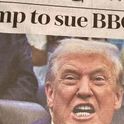Multilateral institutions often seem ill matched to the challenges they are supposed to address. Some would argue that the World Trade Organisation is a prime example of this problem, citing the prolonged deadlock in global trade negotiations among other issues.
No doubt the WTO does have real shortcomings but it continues to play an important role. This was demonstrated during the 2008 financial crisis when the WTO did its job and forestalled a damaging rush to protectionism. More recently, and mostly below the radar, the organisation has been quietly making significant progress in tackling some of its longstanding problems—delivering small but significant new agreements and taking important steps towards modernisation. One consequence of the current crisis in global trade, rising US-China tensions, and President Trump’s direct threats to the WTO is that we could undercut this progress, damaging the organisation just as it is showing signs of revival.
Turn the clock back to autumn 2013. The Doha Round of negotiations aimed at delivering ambitious reforms of the WTO was already 12 years old and was going nowhere. Talks had broken down. Out of frustration, many governments were instead pouring their energies into regional and bilateral trade deals. In the innocent world of 2013, this was considered a major crisis for the global trading system. The WTO ministerial conference in Bali in December that year was seen as make or break. The then EU trade commissioner Karel De Gucht summed up the mood, saying that “it is the fate of the entire WTO that is at stake.”
In the event, Bali was a success. WTO members struck the first major multilateral agreement in two decades—the Trade Facilitation Agreement. Then, like the proverbial buses, Bali was followed by other successful deals at the next ministerial conference in Nairobi in 2015.
These breakthroughs were reached despite huge divisions among WTO members. Decisions at the WTO require consensus, which effectively means that all 164 members have their own veto. This ensures that no one is bounced into doing something that they don't want to do. However, the implicit threat of a veto can also be used as leverage to advance your own pet issue—a tactic known as hostage taking. In Bali, India and Cuba both threatened to use their veto—pushing the negotiations through two successive nights until exhausted ministers finally reached a compromise.
With these tactics in play a divided membership cannot advance. The most fundamental division remains the fate of the Doha Round—and this is where we are seeing a crucial change. Instead of continuing to fudge the issue members decided to face it. They explicitly acknowledged in a ministerial communiqué that some members remain committed to the Doha Round, while others do not. Some of the Doha issues remain live, with negotiations ongoing—this move did not change that. Rather, it expressed the desire of many to open discussions on a wider range of topics to reflect a changing economy.
This has given rise to a new chapter in the work of the WTO, with new initiatives launched by large groups of countries on a range of topics, from e-commerce to women’s economic empowerment. This is notable for a number of reasons.
First, the fact these initiatives are comprised of interested members, rather than the whole WTO membership is a minor revolution. Like many organisations, the WTO has its own set of clichés. In advocating fully multilateral efforts, the common refrain is: “if you want to go fast go alone, but if you want to go far go together.” Clearly this has led some to conclude: “how about a group of us go quite far, quite fast?” It is an important shift—no longer can one member stop others from advancing, at least as far as these initiatives are concerned.
There are previous examples of this “plurilateral” approach but the difference now is that this is where most of the action is to be found. The new initiatives include members of all shapes and sizes and stages of development, but there are some notable opponents to the new approach—including India. The country did not participate when 76 WTO members launched negotiations on e-commerce at Davos in January. Interestingly, just down the road from the launch event, there was a tennis court-sized poster of Prime Minister Modi promoting “Digital India.” If e-commerce negotiations continue to make progress it will surely be hard for any major economy to remain outside.
Second, it is notable that all of this is happening without US leadership. Throughout the history of the WTO (and its predecessor the General Agreement on Tariffs and Trade), the US has usually been at the forefront, driving negotiations forward. Under Trump the US no longer leads, but others have stepped forward. It is mostly smaller economies that are championing the new initiatives. On e-commerce, the US is engaged but is not making the weather—and now China has joined these talks it can’t afford to remain aloof. Drawing up new rules in this area cuts to the heart of the US-China trade war, which some argue is better described as a “tech war” with the two giants vying to be the dominant player.
Third, it is significant that this work is advancing despite the escalating crisis in global trade that is threatening the WTO itself. It is a sign of how committed governments are to this work. It also suggests that they see this as a way of answering the calls for reform of the organisation and showing that it still has something to offer.
In this sense the current crisis may perversely have created an opportunity for the WTO, delivering the wake up call that is needed if the organisation is to change and survive.
Brexiters have a tendency to look to the WTO for magical solutions, so as a fourth and final point it is important to note that none of the above contains any such solution. A no-deal scenario whereby the UK surrenders its current close trading relationships and defaults to “WTO terms” remains a very bad idea, whatever the future holds for this vital organisation.
David Tinline, senior advisor to the WTO Director-General 2013-2019 @davidtinline
The World Trade Organisation has been making more progress than you think
The irony is that Trump launched his attacks on the body just as it began to show signs of revival
October 03, 2019

The World Trade Organisation (or L'Organisation mondiale du commerce). Photo: Xu Jinquan/Xinhua News Agency/PA Images











